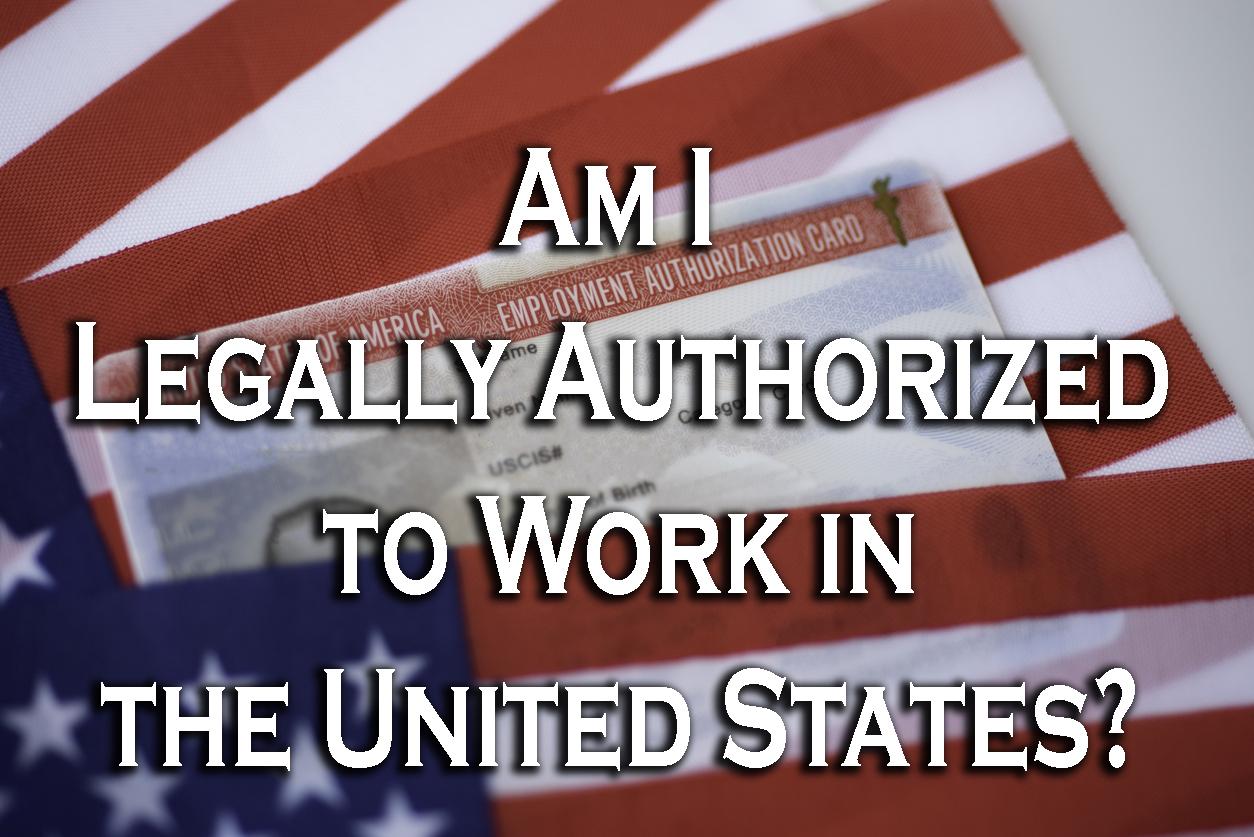Am I Legally Authorized to Work in the United States?
All employers in the United States are required by law to confirm that their employees are legally authorized to work in the country. If you are not a citizen or a permanent resident of the United States, you need to obtain a permit to work, in addition to the correct type of work visa. In this article, we will answer the question of “Can I legally work in the United States?” as well as the documents you will need to get a work permit as a non-citizen.
Who Is Permitted to Work in the U.S?
There are several categories of foreign workers that are allowed to work in the United States. These include:
● United States citizens
● Lawful permanent residents
● Non-citizen nationals of the United States
● Non-residents, non-citizens, duly authorized to work — students and exchange visitors, temporary (non-immigrant) workers, and permanent (immigrant) workers
Are you legally authorized to work in the United States? Yes, if you fall under any of the categories mentioned above.
How to Get a Permit to Work in the U.S.
The permit to work in the U.S. is called an Employment Authorization Document (EAD), also known as an EAD card. It is issued by the United States Citizenship and Immigration Services (USCIA), proving that the holder is legally allowed to work in the country. The EAD card is typically valid for one year, and you can renew or replace it after it expires or if it is lost.
It’s important to note that U.S. citizens and permanent residents don’t need to obtain an EAD card or any other work permit other than their Green Card (for permanent residents).
Eligibility Requirements for Getting an EAD Card
In addition to offering proof of identity documents (e.g., birth certificate), you also need to belong to one of the eligible categories of foreign workers in order to apply for an EAD. These include:
● Refugees
● Asylees and asylum seekers
● Students looking for a particular type of employment
● Foreign nationals pursuing the final stage of permanent residence in the U.S.
● Nationals of certain countries that have been given a Temporary Protected Status (TPS) due to specific conditions in their home countries
● Fiancés and spouses of U.S. citizens
● J-2 spouses or minor children of exchange visitors in the U.S.
● Dependents of foreign government officials
● Other workers (depending on the specific circumstances)
If you fall in any of these categories and meet several additional requirements that the USCIS often updates, you can apply for Form I-765. Most applicants submit their I-765 application to the USCIS by mail, but online filing is also an option for a few of the EAD categories, so be sure to check the official website for the most recent information.
When you’re hired for a new job in the U.S. and have provided your work permit, your employer needs to verify your identity and eligibility to work. In addition to that, your employer must keep an I-9 form (Employment Eligibility Verification form) on file.
Can I legally work in the United States? Yes, you can, provided that you are eligible and get the necessary permit. If you need help understanding the EAD application procedure or the eligibility criteria, it’s best to speak with a legal professional. Legal Chiefs has a wide network of attorneys specializing in employment law who are ready to help you.

